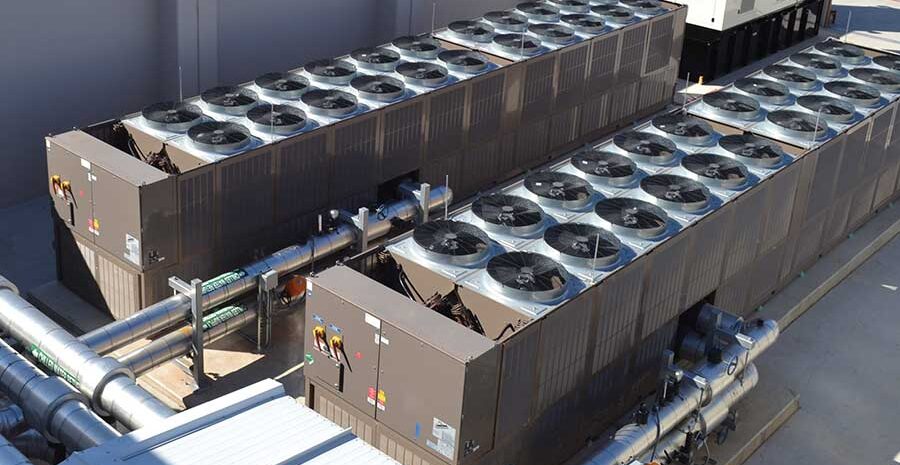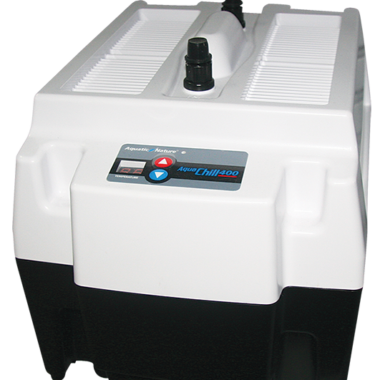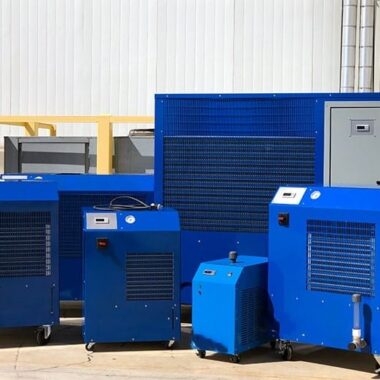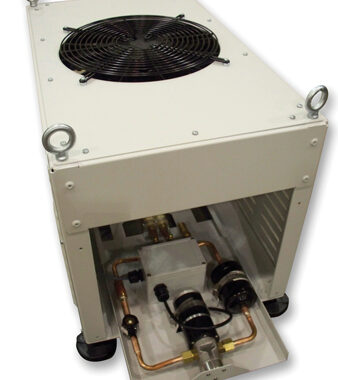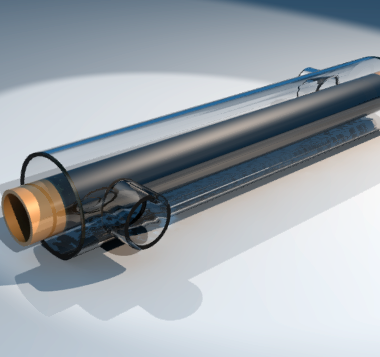Air-Cooled Chiller: Guide to Choosing the Best Air-Cooled Chiller for Data Centers
Introduction
Data centers require highly efficient and reliable cooling systems to maintain optimal operating conditions for servers and other critical equipment. Air-cooled chillers are a popular choice for data centers, offering cooling solutions that are easier to install and maintain compared to water-cooled systems. However, choosing the best air-cooled chiller for a data center involves several key considerations that impact performance, efficiency, and scalability.AIR COOLED CHILLER
Cooling Capacity and Load Requirements
- Assess Heat Load: Calculate the total heat load generated by servers and other equipment to determine the cooling capacity needed. The chiller must be capable of handling peak loads without compromising the data center’s performance.
- Scalability: Opt for a chiller that can scale with your data center’s growth. Modular air-cooled chillers allow for incremental capacity increases as your data processing needs expand.
Energy Efficiency
- High Efficiency Ratings: Energy efficiency is crucial in reducing operational costs and minimizing environmental impact. Look for chillers with high energy efficiency ratings, such as those certified by ENERGY STAR or equivalent programs.
- Variable Speed Compressors: Chillers with variable speed compressors can adjust cooling output to match real-time demand, improving efficiency by reducing energy consumption during periods of lower load.
Climate and Location Considerations
- Ambient Temperature Suitability: Air-cooled chillers rely on ambient air to dissipate heat, so their performance can be affected by local climate conditions. Select a chiller designed to operate efficiently in the climate where your data center is located.
- Outdoor Installation: Ensure that the chiller is suitable for outdoor installation, as most air-cooled chillers are placed outside the data center. Weatherproofing and corrosion resistance are essential for long-term durability.
Redundancy and Reliability
- Built-in Redundancy: Data centers require continuous uptime, making redundancy a key consideration. Choose chillers with built-in redundancy features, such as dual refrigeration circuits or multiple compressors, to ensure uninterrupted cooling in case of component failure.
- 24/7 Operation: The chiller must be capable of reliable operation around the clock, with robust components designed for continuous use in high-demand environments.
Space and Footprint
- Compact Design: Space is often a premium in data centers. Consider air-cooled chillers with a compact footprint that can fit within the available outdoor space without overcrowding the area or interfering with airflow.
- Low Noise Levels: Chillers can generate noise, which may affect nearby areas or staff. Choose units with noise reduction features, such as sound-insulated compressors and low-noise fans, especially if the data center is located in a populated area.
Advanced Control Systems
- Automated Monitoring: Select chillers equipped with advanced control systems that provide real-time monitoring of temperature, pressure, and performance metrics. Automated controls can adjust cooling parameters based on real-time data, improving efficiency and response time to changes in heat load.
- Remote Access and Integration: Choose chillers with remote access capabilities and compatibility with building management systems (BMS) to enable centralized control and monitoring. This allows facility managers to oversee multiple systems and optimize performance remotely.
Load Balancing and Distributed Cooling
- Load Sharing: In larger data centers, distributing the cooling load across multiple air-cooled chillers can improve system efficiency and resilience. Load sharing between chillers ensures that no single unit is overburdened, extending the lifespan of the equipment and reducing the risk of failure.
- Zoned Cooling: Implementing zoned cooling strategies, where specific chillers serve different sections of the data center, can optimize cooling efficiency. This method allows for targeted cooling based on the varying heat loads of different server racks or areas.
Advanced Monitoring and AI-Based Optimization
- AI-Powered Cooling Optimization: Advanced air-cooled chillers now incorporate AI-powered control systems that analyze real-time data to optimize cooling performance. These systems can automatically adjust cooling output based on predictive analytics, ensuring the most efficient operation.
- Proactive Maintenance Alerts: AI-based monitoring systems can predict when components are likely to fail, allowing for proactive maintenance before issues arise. This reduces downtime and enhances the reliability of the cooling system.
Total Cost of Ownership (TCO) Considerations
- Upfront vs. Operating Costs: While the upfront cost of an air-cooled chiller is important, also consider the total cost of ownership, including energy consumption, maintenance, and potential downtime. A slightly more expensive but more efficient chiller can lead to substantial savings over the lifespan of the unit.
- Long-Term Reliability: Invest in air-cooled chillers from reputable manufacturers known for producing high-quality, durable equipment. While initial costs may be higher, the long-term reliability and reduced need for repairs can lower overall costs over time.
Customization and Tailored Solutions
- Tailored Chiller Configurations: Depending on the specific needs of your data center, consider custom-configured chillers that can be tailored to meet unique cooling requirements, such as high-density server clusters or specialized equipment. Custom solutions ensure that the chiller matches the exact specifications of your data center’s infrastructure.
- Vendor Support for Customization: Work with chiller manufacturers who offer strong support for customization and can provide expert guidance on designing a cooling system that aligns with the precise needs of your data center.


